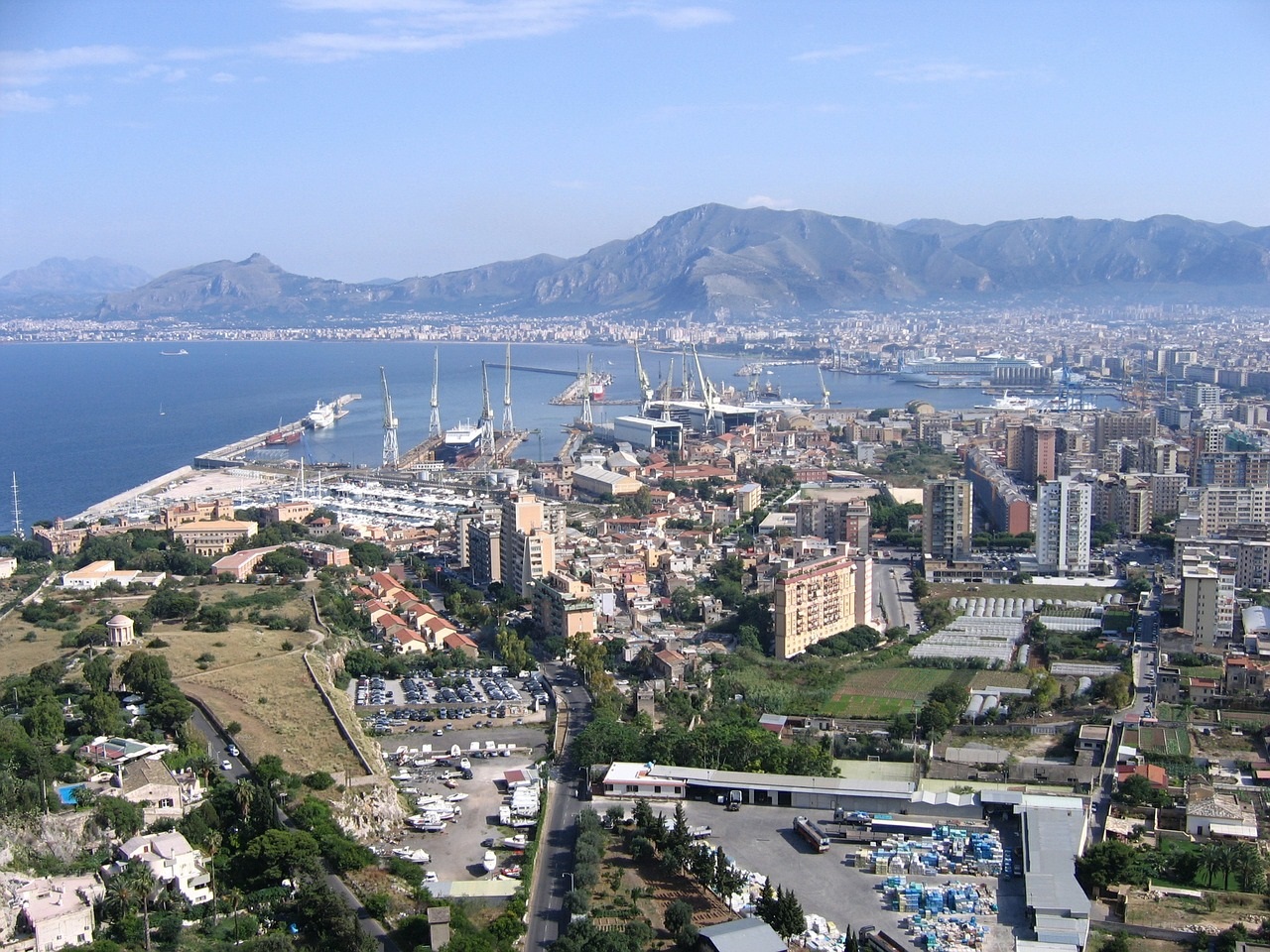
Palermo
Capital of Sicily, the city of Palermo stands out for its forts contrastes. The most relevant of them is the one that we appreciate among its aristocratic buildings, the fruit of a splendid past, and its most degraded neighborhoods, an evident example of the secular economic backwardness of the south compared to the north of Italy. But the latter are places full of life where people talk loudly and life passes slowly.
Palermo is also a mix of Phoenician, Carthaginian, Greek, and even Norman and Spanish cultures. A human wealth that also contrasts with the crimes of the Mafia. For all this and much more, it is an exciting city. If you want to know her, we invite you to join us.
What to see in Palermo
Once accustomed to the chaotic traffic of Palermo (we recommend that you keep an eye on the cars), we have a lot to see in Palermo: Carthaginian ruins, Renaissance palaces, Baroque churches or neoclassical theaters. But, above all the set of monuments included under the denomination Arab-Norman Palermo and the cathedrals of Cefalù and Monreale, which is a World Heritage Site. We are going to start our visit.
Zisa Palace
It welcomes the visitor at one of the entrances of the town, the via Calatafami and it is in front of the Capuchin monastery, where the catacombs of the same name are. It is an impressive building in the Arab-Norman style, whose construction began in the XNUMXth century. You can visit it and observe inside pieces of Islamic art and an Arab fountain in the central room.
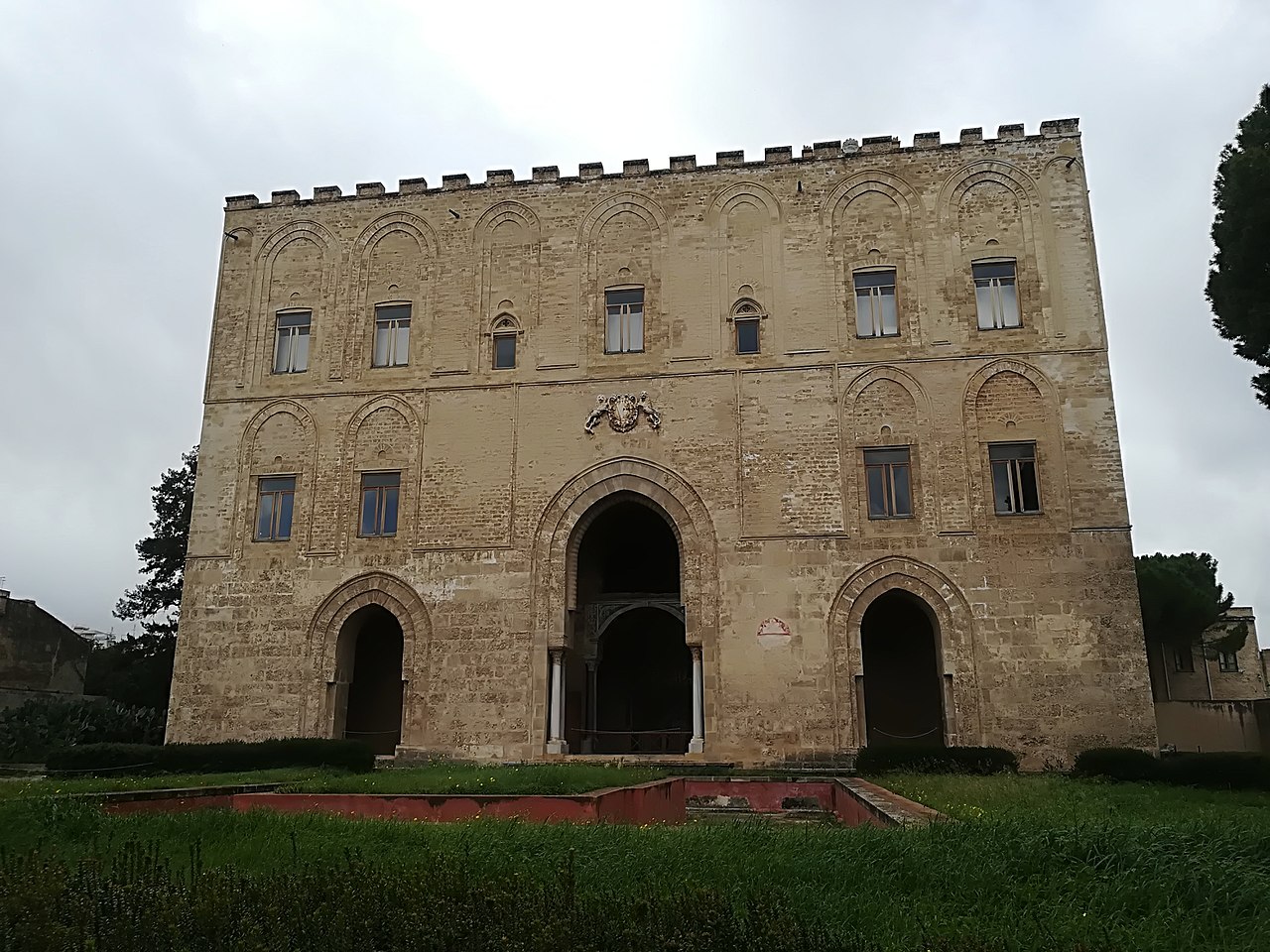
Zisa Palace
Norman Palace
Continuing towards the center of Palermo and joined the spectacular New door, built in 1583 as an entrance to the city, you have the Norman Palace, another example of architecture that combines the style of this town with that of the Arab.
In addition, this imposing building built in the XNUMXth century houses in its interior the Palatine Chapel, which was that of the Norman kings of Sicily and that combines the previous styles with the Byzantine. As a result, it has a basilica dome, six pointed arches, and three apses. But above all, its interior, full of precious mosaics and works of art, will draw your attention.
Sclafani Palace and Villa Bonnano
Following the street in a downward direction, we find the Sclafani Palace, built in the fourteenth century and that presents a slightly pointed arch portal with several aljimeces on its second floor. Also, attached to this building is VIlla Bonnano, which, despite its name, is a beautiful modernist garden. By the way, you will be interested to know that, from one of its extremes, the tourist buses that show Palermo to visitors.
Monreale Cathedral
Crossing the Porta Nuova, you will reach the via Vittorio Emanuele, which runs through the entire old town and is one of the most popular streets in Palermo. But first you will find the Cathedral of Monreale or of Santa Maria Nuova, considered one of the best Arab-Norman buildings in the world.
It was inaugurated in 1172 by William II of Sicily, who is buried in it and, if it is spectacular on the outside, it is even more so on the inside. Its entire interior is covered by golden mosaics that represent scenes from the Bible and, in addition, it has a spectacular cloister of 228 columns also profusely decorated.
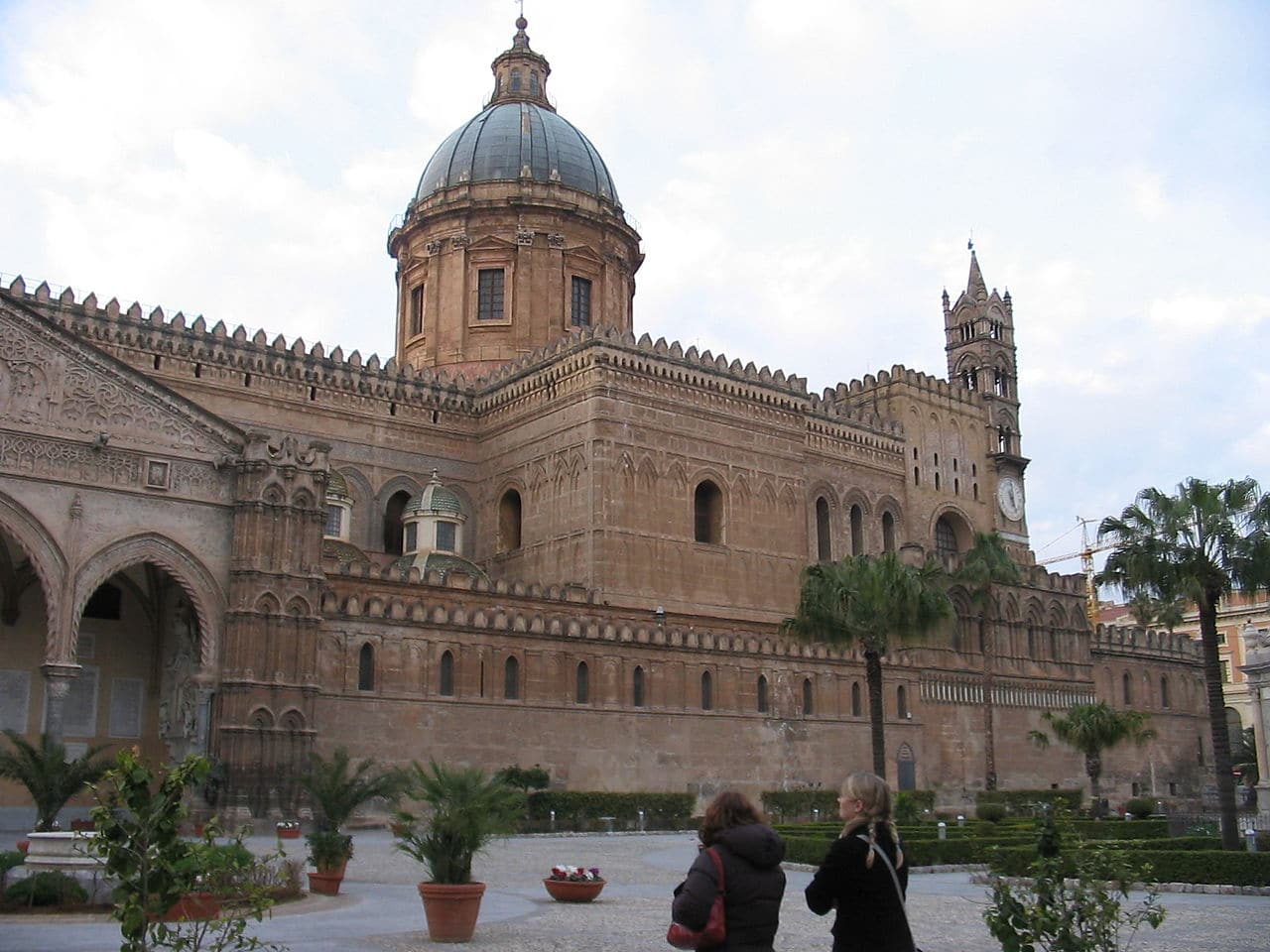
Monreale Cathedral
Quattro Canti
At the corner of the previous street with Via Maqueda, more specifically in Plaza Vigliena, you will find the Quattro Canti. There are four concave-shaped facades of neoclassical buildings that house statues of the four saints of Palermo, of the four Spanish kings of Naples and Sicily, and of the four seasons.
Churches of San Cataldo and La Martorana
They are also part of the Arab-Norman constructions of Palermo. They are very close to the previous monument, passing Pretoria square (where you will see the beautiful source of the same name) and arriving at Plaza Bellini. The church of San Cataldo was built in the XNUMXth century and its three domes plastered in red stand out, as well as the interior mosaic floor. For its part, that of the Martorana stands out for its plurality of styles.
Other monuments of Arab-Norman Palermo
Among them, the cefalù cathedral, built in the XNUMXth century. It has a Latin cross plan with three naves, a presbytery and an apse with pasture of Byzantine influence. But one of its most characteristic features is the set of sculptures that represent bestiaries. The mosaics are also abundant in the temple, among which those of the transept stand out.
You should also visit the Admiral's Bridge, finished around 1131, and the church of San Juan de los Eremitas, which is reminiscent of San Cataldo because it also has red domes of Arab influence. Instead, its bell tower has more gothic features.
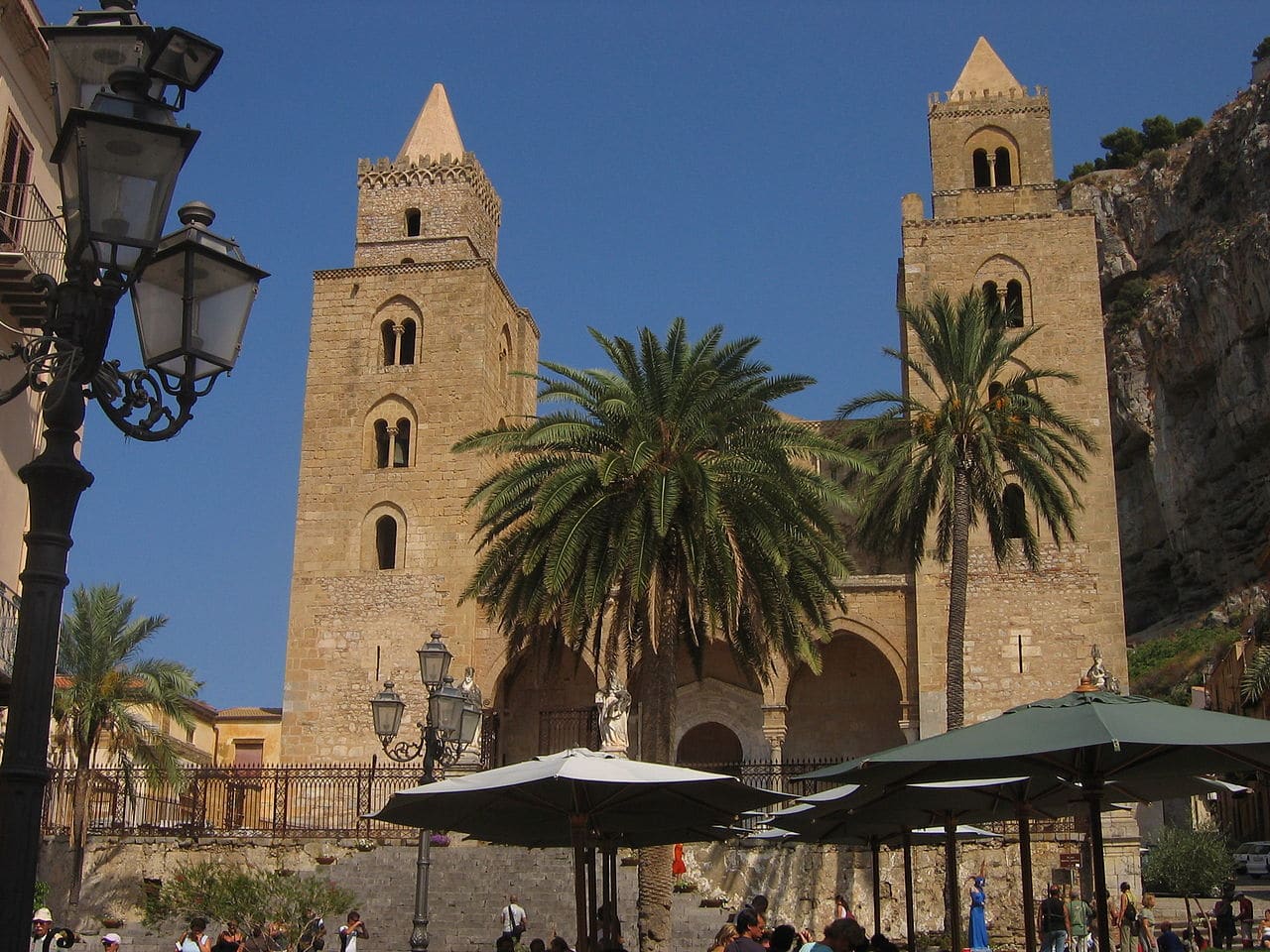
Cefalù Cathedral
Other palaces
Apart from Norman times, you can see other equally impressive palaces in Palermo. A) Yes, the Abatellis, built in the XNUMXth century, which is a beautiful example of Catalan Gothic. Currently, you will find in it the Regional Gallery of Sicily. And likewise the Natoli palace, neoclassical style.
Massimo Opera House
It responds to the same style of the previous palace, although it was built in the XNUMXth century. It is a magnificent building that presents a pronao of columns raised on a great staircase. Behind her, a huge hemispherical dome dominates the roof of the building. It is the largest opera house in Italy.
Museums
In Palermo you have three museums that are an unavoidable visit. One is the archaeological, which houses pieces of all kinds, but especially those found in the sites throughout Sicily. Another, the Regional Gallery, where you can see paintings and sculptures by authors such as Giorgio Vasari, Jan Provost or Antonello da Messina. And the third and most curious is the Antonio Pasqualino International Puppet Museum, with more than four hundred automatons from all over the world.
What to do in Palermo
Curiously, despite being a coastal city, Palermo does not have a beach. However, very close you will find them beautiful. For example, the Mondello beach y those of Cefalù. And also those that are in the Gulf of Carini such as Capaci and Isola delle Femmine.
But one of the best things you can do in the Sicilian city is tour its markets, some of them historical. In this sense, the The Vucciria, although lately it has lost its validity; the one of Ballarò, which is the largest and where it is sold, literally, shouting (the so-called abbanniata chants), or that of The boss, with an extraordinary color range.
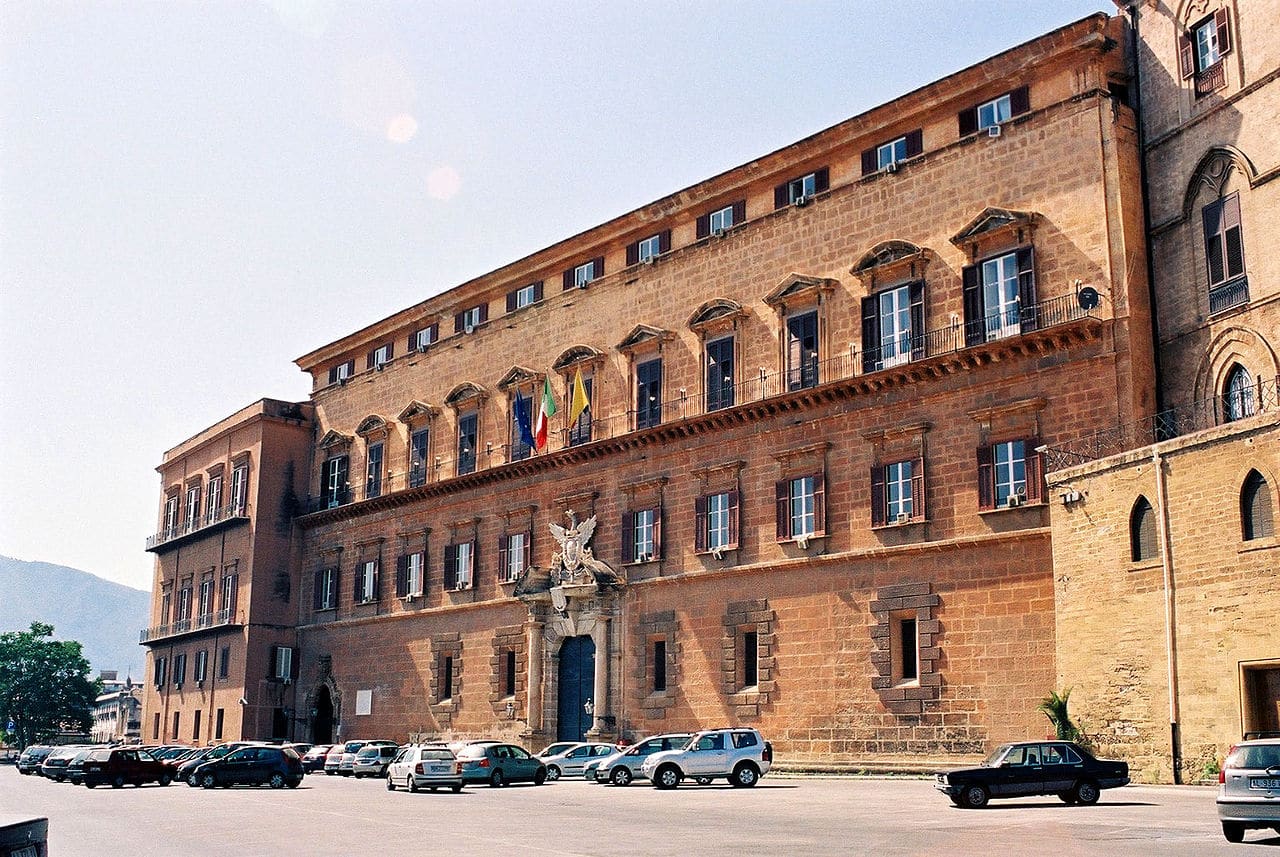
Norman Palace
Another possibility that Palermo offers you is to make a boat excursion for its beautiful coasts. And you can also visit the city aboard a motorcycle car typically Sicilian. To relax after so much visit, you can take a walk through the Ortho Botanical, the gardens of Villa Nápoli or those of Villa Bonnano, already mentioned.
In terms of hospitality, there are numerous bars and terraces near the market mentioned in the first place. Among them the popular Azzurra Tavern, which offers typical drinks such as Sicilian sangue or zibibbo at affordable prices. Very close is Au domino, more focused on the nightlife.
The weather: when is it better to visit Palermo
The Sicilian city has a climate typically Mediterranean type,. Therefore, it is soft and warm. Winters are cool but relatively pleasant. In fact, the coldest month is January and has an average temperature of twelve degrees Celsius. As for the summers, they are hot, especially the month of August, which averages almost twenty-seven degrees. In general, the average temperature at the end of the year is around eighteen.
On the other hand, it is not an excessively rainy climate. The precipitations take place mainly in autumn and in the first month of the winter, with almost one hundred millimeters. In contrast, the summer is dry, with more probabilities of rains in September. For all these reasons, this last station is the best to visit Palermo.
Palermo gastronomy
The rich history of Sicily in general and of Palermo in particular has made its gastronomy present both Arab and Greek influences. Adding to these the Mediterranean tradition, the city offers you exquisite cuisine.
Its character as a coastal town makes the fresh fish be excellent in Palermo. But also the meat they are good quality. And even better vegetables, grown in Sicilian orchards. With such good raw material, the people of Palermo make delicious dishes.
Among the typical dishes, pasta is the queen. This is common to all of Italy, but in Palermo they are proud to have the best in the world. It is true that, if you travel to Milan or Roma, they will tell you the same. But it is true that it is a very good quality pasta. We recommend that you try it with sarde him, that is, with sardines, or you ask pasta alla Norma, with cheese, aubergines and tomatoes.
If leaving the most typical, the sfincione It is the classic Palermo pizza. It is characterized by having stuffed bread and having caciocavallo cheese, tomato, onion, anchovies and aromatic herbs on top.
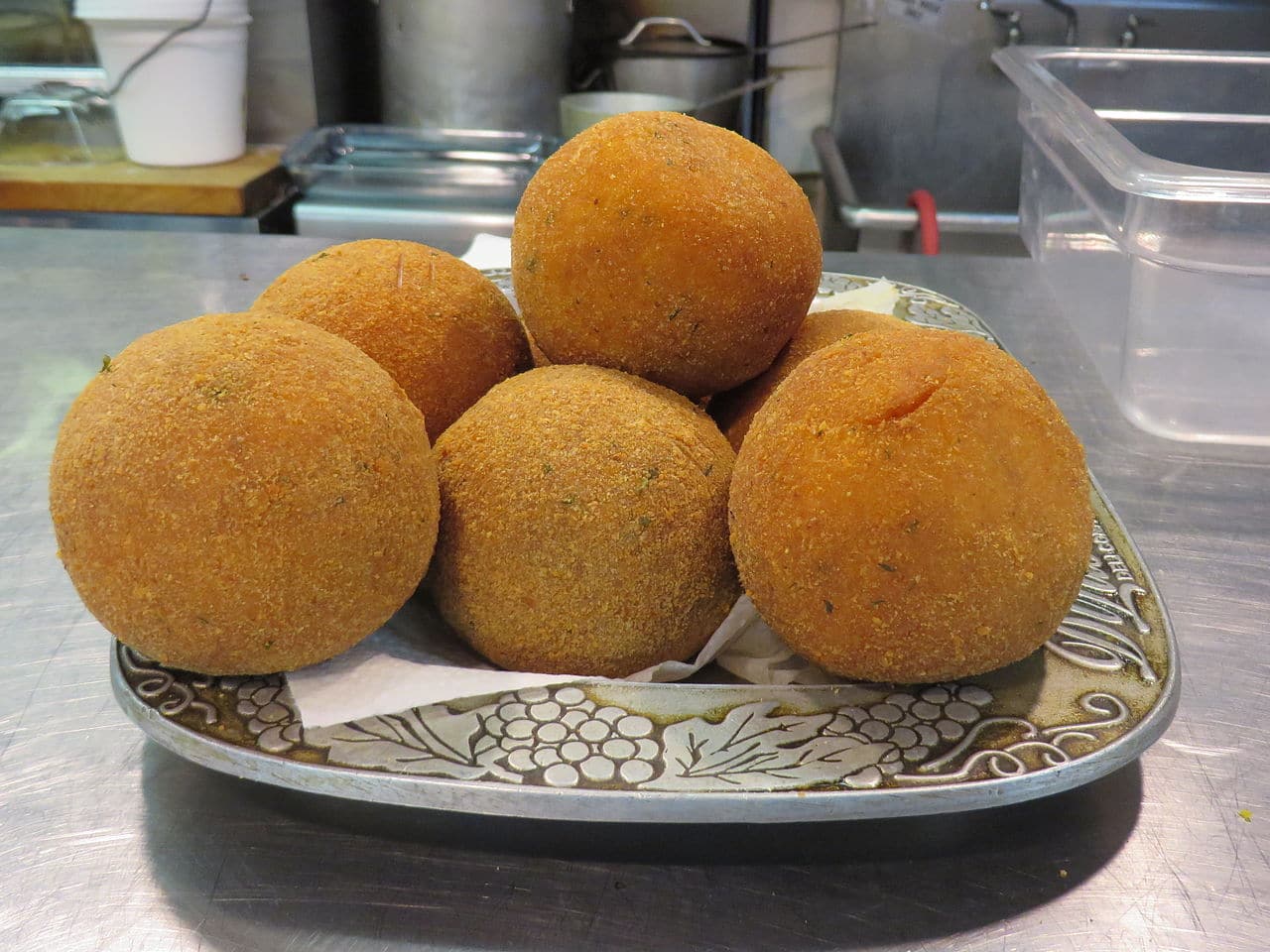
Arancini
However, the Sicilian city has other exquisite dishes. As for the aperitifs, you will find in almost all the bars arancini. They are a kind of rice croquettes in the center of which they carry the most varied products such as cheese, peas and even ragú. Also very popular are fritters, some chickpea flour cakes that are fried.
To snack, you also have the stiggiola, a kind of Moorish skewer that has cow intestine with onion and herbs. You will find it everywhere. And the pannino with the milza, a sandwich made with spleen and beef lung, grated cheese or lemon. However, these two dishes are not for everyone for obvious reasons.
More classics are some of the antipasti from Palermo. This denomination is equivalent to what we call starters or first courses. Very popular is the caponata, a stew that has aubergines, onion, olives and capers. And of Arab influence is the cous-cous with fish or vegetables.
Regarding the main dishes, you have the swordfish rolls, some rolls of this fish that have garlic, parsley and even bread or pistachios inside. Similar is the Sarde A Beccafico, only with sardines. And, as for the meats, you can try the badduzze, a type of meatballs. But above all, the Fake slim, a veal roll stuffed with bacon strips, various cheeses and an egg.
To finish your meal, a good dessert. The ice creams, as in almost all of Italy. But really typical of the area are the cannoli, cream-filled cakes; the martorana fruit, a kind of marzipan whose external appearance resembles some type of fruit; the border, which would be like our slushie, or the Sicilian cassata, a cake made of sponge cake, also marzipan and ricotta cheese. If you add a cappuccino, you will look like a prince after eating.
How to get to Palermo
The Italian city has the Palermo-Punta Raisi International Airport, to which flights arrive from Spain. He is also known as Falcone Borsellino, in honor of two judges killed by the Mafia. Although it is 35 kilometers from the city, you can get there by metro line A.
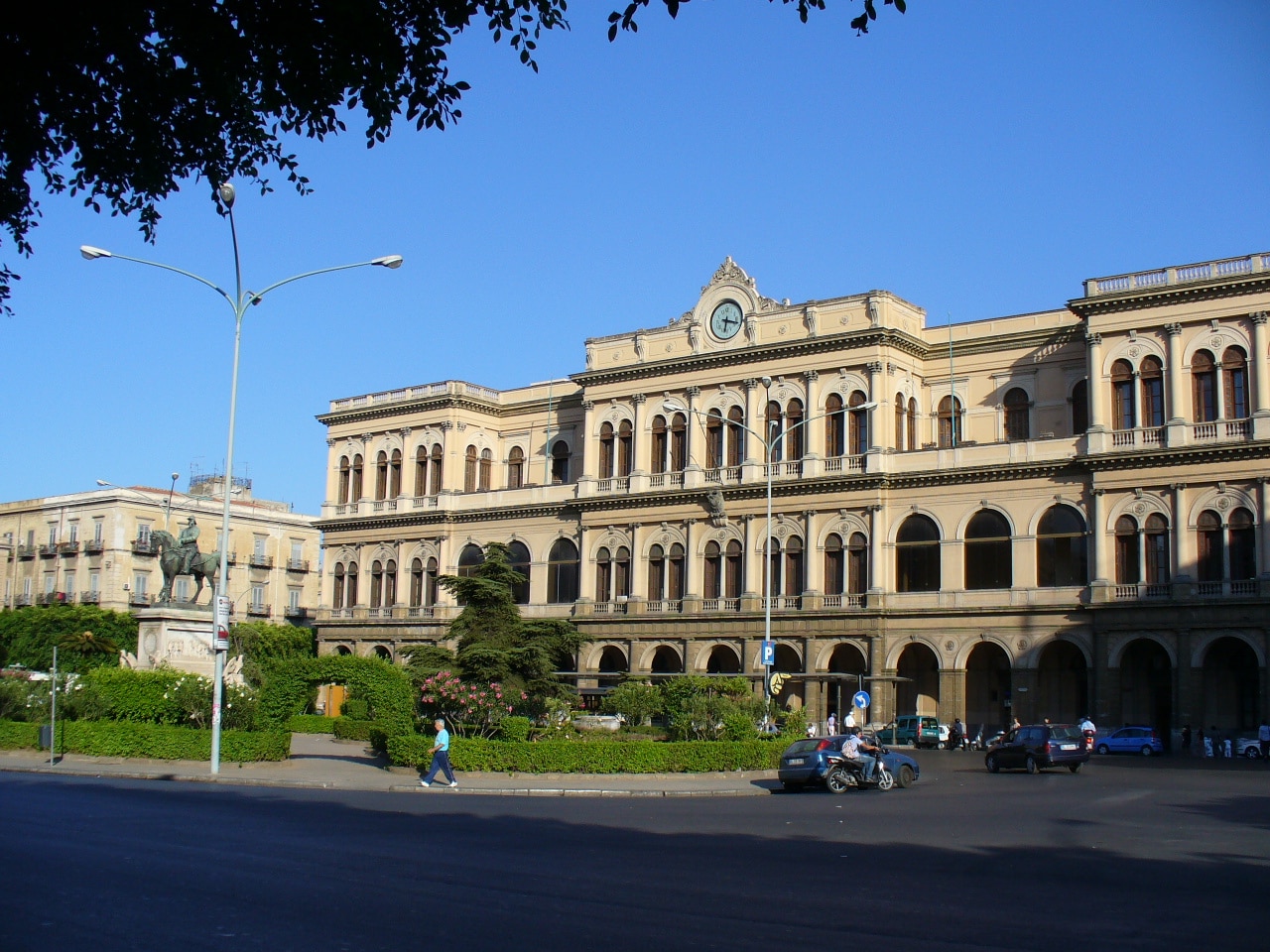
Palermo Central Station
It runs through the urban area from northeast to southeast and has 14 stations. The other line or B bypasses the town and has 4 stations. Both are in an expansion project.
You can also get to Palermo by sea. The Civil Port It is the most important in Italy and is connected to all the Mediterranean countries. And likewise, despite the fact that Sicily is an island, through the railroad, which travels the sea distance aboard a ferry.
Finally, when it comes to moving around Palermo, you have a wide network of Bus. However, it is quite late and you will have to arm yourself with patience. We also do not recommend a rental car, as the traffic in the Sicilian city is chaotic. Therefore, it is best that you visit the historic center on foot. And, for slightly longer distances, use the metro, although it has few stops.
In conclusion, Palermo is a wonderful and chaotic city. It offers you beautiful monuments, some unique in the world; a wonderful gastronomy and a lot of life in its streets. Go ahead and visit it.